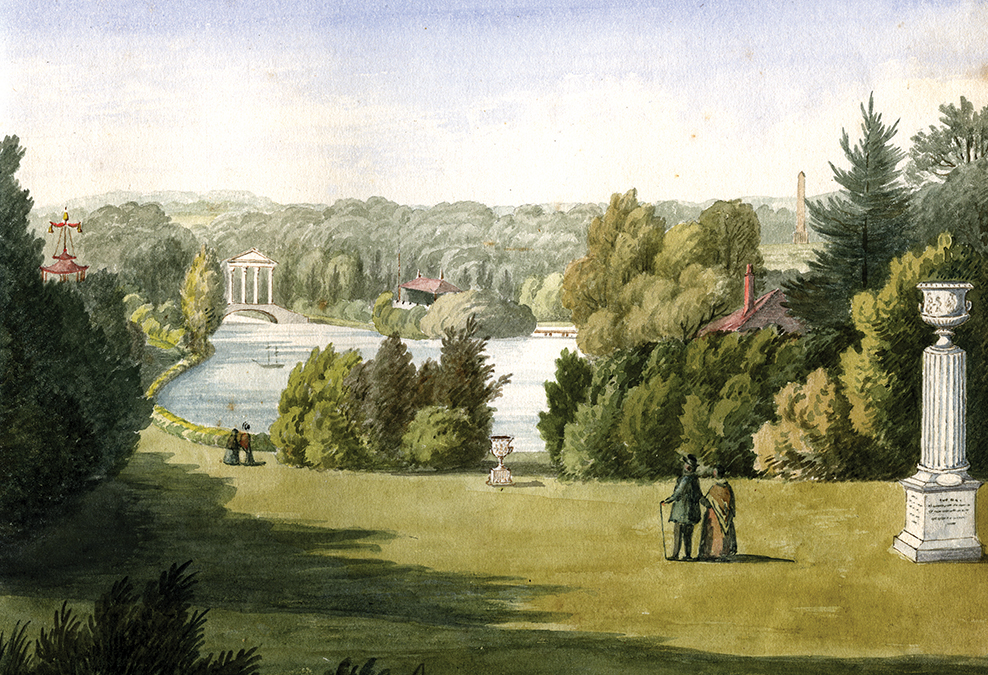Make sure your volume is on: "A more intimate type of garden..."
Show transcript
- So the first question I'm going to ask, I think, is about the nature of a Regency landscape and what they were thinking of, what they were trying to achieve. Because it seems like a very specific time in people's relationship with landscape. So what do you understand about the Regency landscape project?
In wider terms than this estate, it's quite a subject in itself, obviously. I mean it follows on - the Regency was the next stage post capability Brown - which was in itself, obviously, another era. So the Regency was quite a short period. Sort of 1790s to ... when did queen Victoria ascend, was it 1836 ish? So it's quite a small period and there was quite a change in the feeling of things, particularly with landscape.
Instead of these huge, vast avenues and massive grassy knolls and vast bodies of water, it got ... I don't know, to find the words really ... it got a little bit more intimate in nature. So there was a reference, particularly, to the country cottage garden and indeed one of the masters of the age, so to speak, Humphrey Repton - the chap who actually devised the term 'landscape architect' , 'landscape designer' - and his "Book of Improvement", in which he'd overlay drawings and showed the landed gentry 'Before' and 'After' ... he was inventor of the ‘Reptonian Bed’. Which was essentially a little Gothic arched metal overlapping edging in a circular bed in the lawn. Which today you'd think , "Yes? Big deal! So what?" but in those days it was a complete change of feel, coming back to that sort of cottage garden … more small scale, but much more intense, and indeed our relationship with the plants.
So instead of quite maybe rare trees coming in from the empire days, et cetera, you had a feel of herbacious shrubs, bulbs, climbers, intermingled through other subjects, the importance of scent and fragrance. So it was quite a mixed bag instead of one type of planting of evergreen, and then deciduous, it was a sort of homogenous mix of, like I say, herbacious perennials with shrubs and trees.
- It sounds like they were almost trying to compose a picture.
Indeed. That's very true. I mean if my knowledge of arts was appreciably be more, I could espouse more but of the day you had people referencing paintings by, I think, the French Poussin and others, and people like Uvedale Price. And they were actually trying to create in the landscape from the landscape painters of the day. It was a deliberate design intent to create a landscape in a painting sort of form, albeit with the factor dimension of time.
- So they saw a landscape and they said, "I want to make it more picturesque"
Indeed. That was the entire movement. Yes.
